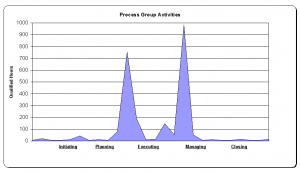 Back in November (2009) I was watching Episode #24 of This Week in Startups featuring Jason Calacanis. His guest that week was Gary Vaynerchuk, of Wine Library TV fame and countless appearances on TV. Sometimes I arrive a little late to the game. I Don't watch a lot of television so I hadn't seen Gary before. While on the show, he promoted his new book Crush It! and I was absolutely intrigued by his level of passion and drive. My motto is anything is possible through passion, commitment, and skill. It doesn't matter if you're a project manager, developer, or entrepreneur. You can and SHOULD have all three, regardless of your trade.
Back in November (2009) I was watching Episode #24 of This Week in Startups featuring Jason Calacanis. His guest that week was Gary Vaynerchuk, of Wine Library TV fame and countless appearances on TV. Sometimes I arrive a little late to the game. I Don't watch a lot of television so I hadn't seen Gary before. While on the show, he promoted his new book Crush It! and I was absolutely intrigued by his level of passion and drive. My motto is anything is possible through passion, commitment, and skill. It doesn't matter if you're a project manager, developer, or entrepreneur. You can and SHOULD have all three, regardless of your trade.
I've been itching to get this book. Because I have a lengthy commute, I waited until it was available in audio version. I downloaded it last night and started listening to it this morning. After my commute today, I arrived to the office not wanting to turn it off. The book is inspiring, motivating, and I identify with several things Gary has experienced and promotes. I am a firm believer if something is bad, you can say something about it. But, if something is good, you need to stand on the tallest hill and yell at the top of your lungs.
The hill, in this case, is Twitter. I wrote just a single tweet:
Started listening to Crushit! by @garyvee on my drive in today. Get the audio version (extras), even if you have the actual book.
Within a few minutes, Gary tweeted back
thank u !
Now that, people, is commitment to customer service! With almost 850,000 people following him on Twitter, he took the time to thank me. Though it was something so simple, it's a level of customer service everyone should and WILL come to expect in the coming years.
When I deal with my customer(s), I get excited, optimistic, and passionate. I work HARD. Why? I love it! Sure, I get paid for providing value but I make sure I thank them from time to time. There must be a commitment to customer service. The interesting thing is, it can be contagious.
So, work hard and be passionate about what you do. Be committed to deliver value to your customers. And don't forget to be skilled at how your implement your solutions.
Disclaimer: I will not financially benefit from the positive review of Gary's book (but I hope he does).

